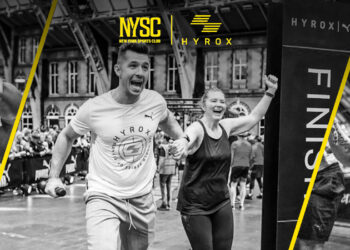Ralph Rajs, an industry consultant, shares three categories of social programs to help build community at your facility.
It is widely believed members are coming back to clubs and will continue to do so as long as they perceive it’s safe. For example, Planet Fitness reported its memberships are 97% all the way recaptured compared to where they were pre-COVID.
And a key reason members are returning is because they miss the social aspect of gyms they cannot get while working out at home.
“A few of the main drivers of members returning include missing their friends, staff members and the fun of working out around other people,” said Ralph Rajs, a fitness industry expert and consultant. “Now is our opportunity as club operators to look at how we can leverage this and create a strategic plan that taps into our need as humans to be social.”
According to Rajs, the challenge club operators face is looking at social programs as the membership builders they are, price them to at least breakeven and measure success against participation. A great place to start is by categorizing social programs into three different categories: Athletic Achievement, Just for Fun and Shared Interest.
“Athletic Achievement programs help members prepare for local events like a 10K, marathon or an obstacle course race,” explained Rajs. “Goal events, like races, bond members and staff in a very special way. When a member accomplishes an athletic event they never thought possible because of your club’s coaching and member support, that is a positive association to your club that cannot be beat.”
Having an engaged staff member who understands participation is the measure of success — not members’ finishing times — is key. Creating a sense of community and support is the top priority. However, these programs can be done with a profit motive — or as a breakeven — to support your social strategy.
Another type of social program category is “Just for Fun” offerings. Rajs said it’s always a bonus if you can add a food and beverage component to these programs — especially alcohol — to attract members.
“Special dance classes and trivia nights are also popular social gathering programs,” said Rajs. They create a great opportunity to partner with a local company that would also like to promote their business, allowing you to offset some cost. You can charge a nominal fee to lock people in, which also helps with cost.”
A big part to making it a successful social offering is in the person running it. The staff member needs to know the members, and understand the mission is to introduce people and create interactions.
The last social programming category is Shared Interest programs — a way to bring people together around something they already love. These specific programs can range from a walking club to a needle point group. “The trick for the club is to discover what the members are already doing and support it by offering a space to meet, organizational help or hospitality like coffee,” explained Rajs.
After two years of isolation and stress, your members want connection. Realizing this is more than setting up a coffee bar or offering a new group class is what will help you cement a real sense of community into your facility.
“The key to any of these social programs is creating a plan the team understands, make the commitment and stick with it, and select a staff person who thrives on getting people together,” said Rajs.
Stay ahead in the fitness industry with exclusive updates!
Taylor Gabhart is the editor of Club Solutions Magazine. She can be reached at taylor@peakemedia.com.











